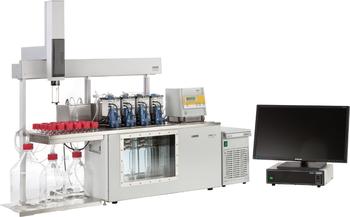
This phenomenon is different from the conditions in the derivation of the falling ball method. Additionally, the inclined-tube viscometer is 10° to the vertical thus the falling ball is not just falling down but is also rolling down. Moreover, it is difficult to determine where the falling ball arrives at the terminal velocity, i.e., whether the distance between the beginning record line and the starting fall position is sufficient. For example, the viscometer requires six different diameter balls to measure a varying range of viscosities, and the user must run tests to select a suitable ball. Nevertheless, the apparatus is limited in application for a stainless steel ball.Īlthough the falling ball method has been well developed and is stated in the international standards, it is somewhat inconvenient to operate this type of viscometer. The instrument applied the first and second coils at different known positions around the falling tube to record the falling time in order to avoid human error. GB1491865) for the measurement of viscosity. (Stoke-on-Trent, Staffordshire, U.K.) devised an improved instrument (patent no. This method considered the effect of edge, inertia, etc., and corrected the measurement result to reach a relative uncertainty on the order of 0.001. 6 developed an absolute falling ball viscometer and made it possible to cover a wide range of viscosities while maintaining a weak uncertainty.

The sample viscosity correlates with the time required by the ball to drop a specific distance, and the test results are given as dynamic viscosity.īrizard et al. The rolling and sliding movement of the ball through the sample liquid are at times in an inclined cylindrical measuring tube. Moreover, six balls were used with different diameters for various dynamic viscosity measurement ranges, and a suitable ball can be selected when the fall times of the ball are not lower than the minimum fall times recorded during a testing procedure. The standards describe an inclined-tube method in which the tube for the falling ball was inclined at 10° to the vertical. 4,5 In the international standards, the method differs from the principle described in Refs. The falling ball viscometer is well-suited for measuring the viscosity of a fluid, and the method has been stated in international standards. The drag force can be obtained from Stokes’ law, which is valid in Reynolds numbers less than 1. In Newton’s law of motion for a falling ball, there exist buoyancy force, weight force, and drag force, and these three forces reach a net force of zero. The method applies Newton’s law of motion under force balance on a falling sphere ball when it reaches a terminal velocity.


The falling ball viscometer typically measures the viscosity of Newtonian liquids and gases. These phenomena utilize three major viscometers in the industry, i.e., a rotating viscometer, a falling-ball viscometer, and a capillary viscometer. These are typically based on one of three phenomena-a moving surface in contact with a fluid, an object moving through a fluid, and fluid flowing through a resistive component. A number of methods are used to measure the viscosity of fluids.


 0 kommentar(er)
0 kommentar(er)
